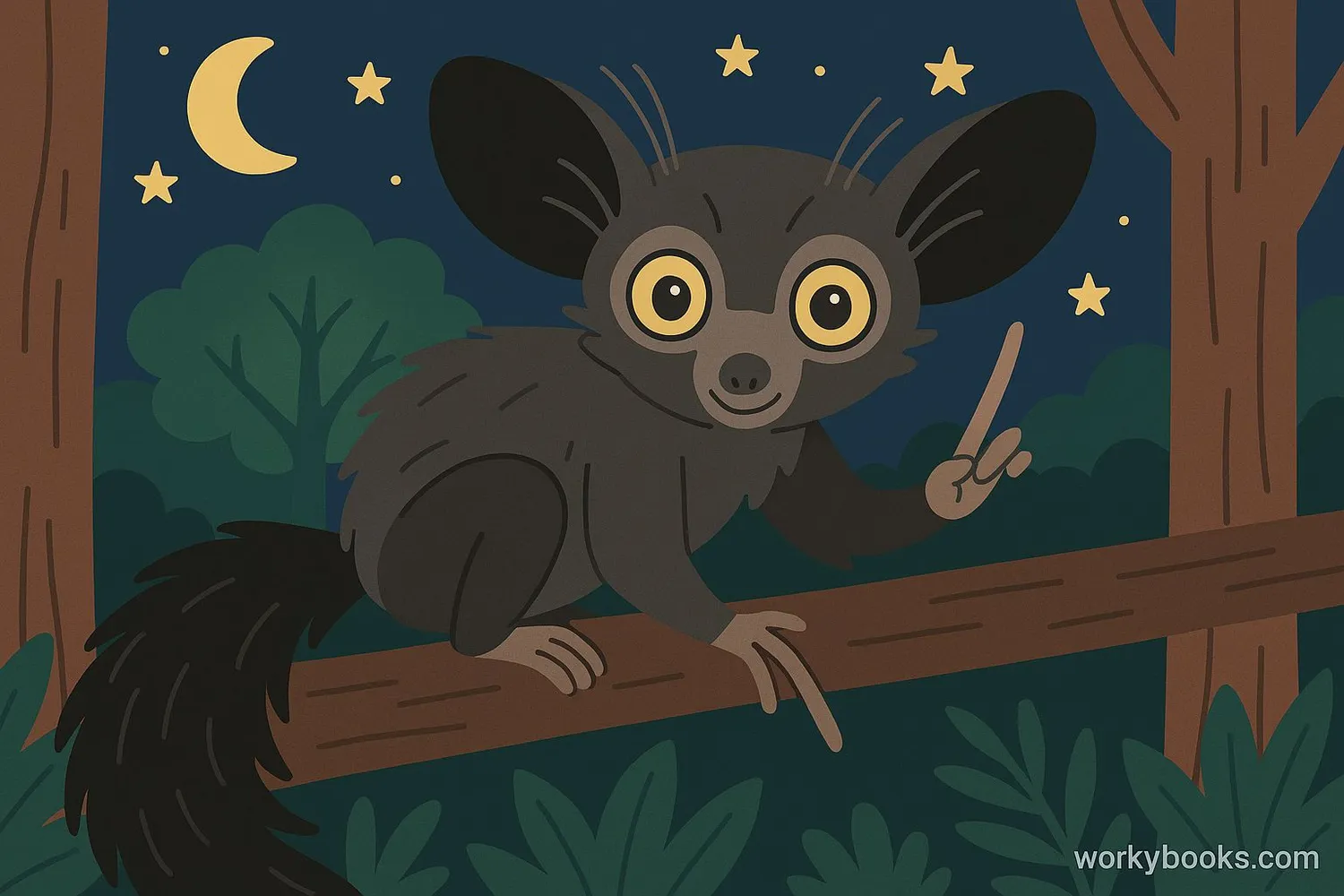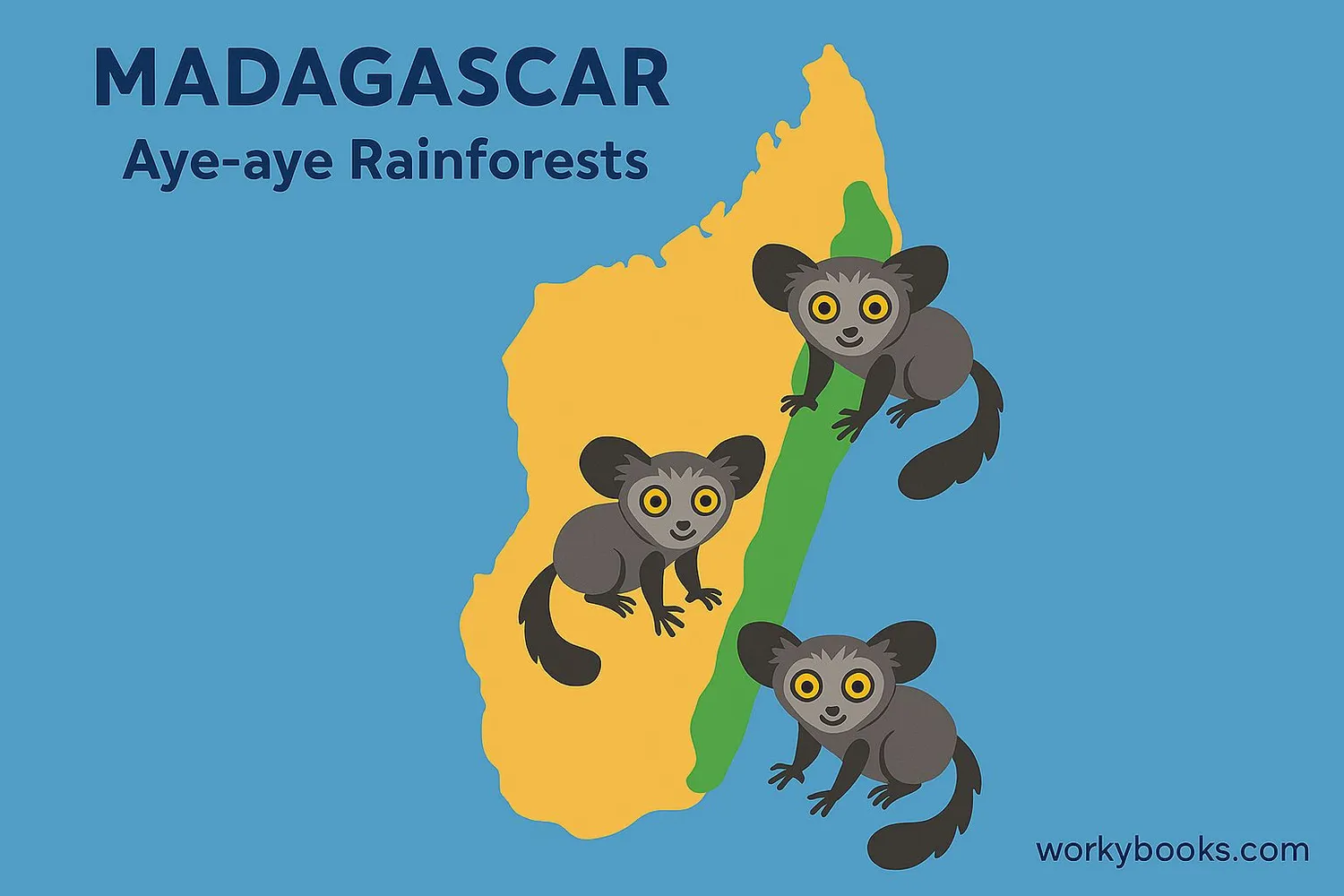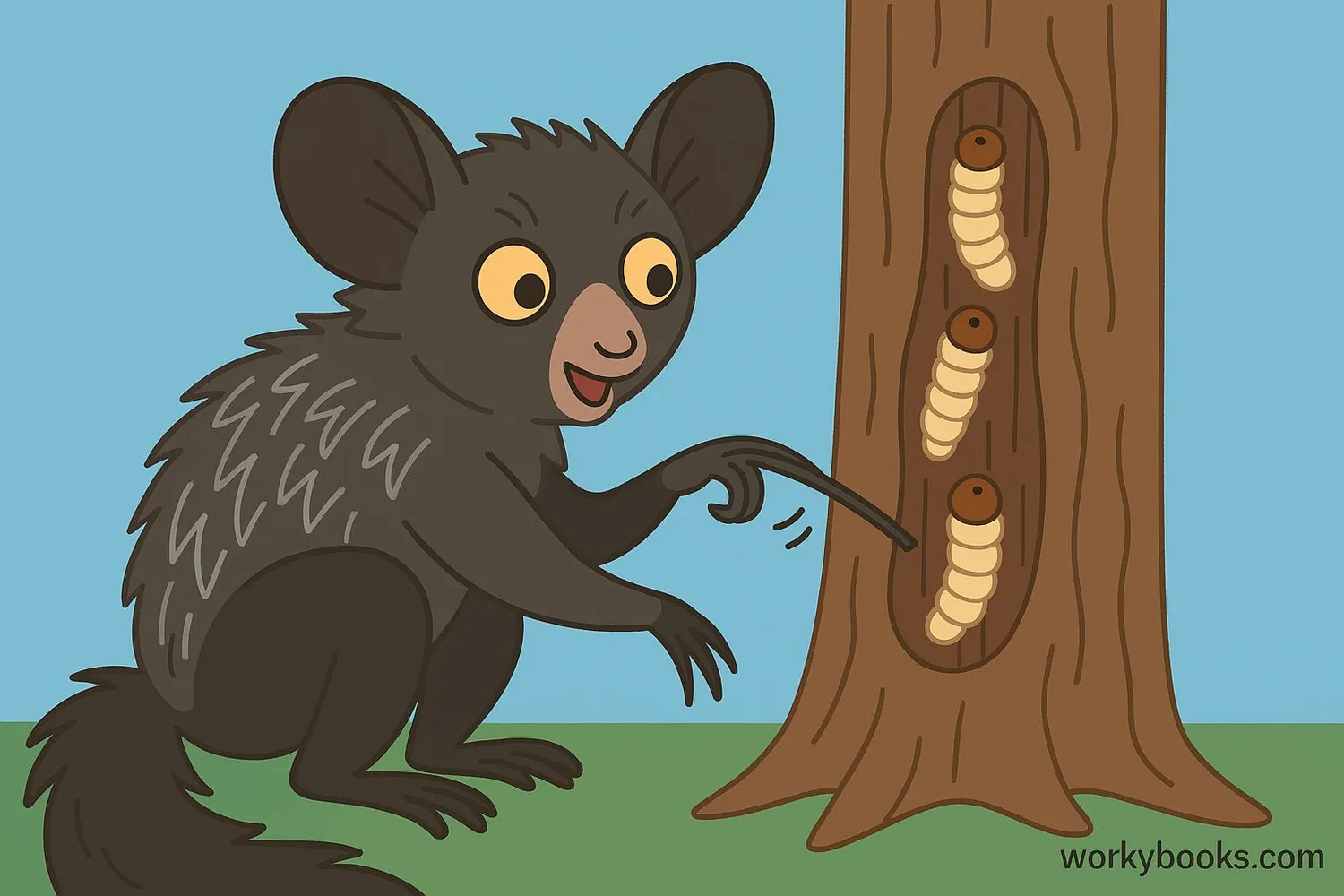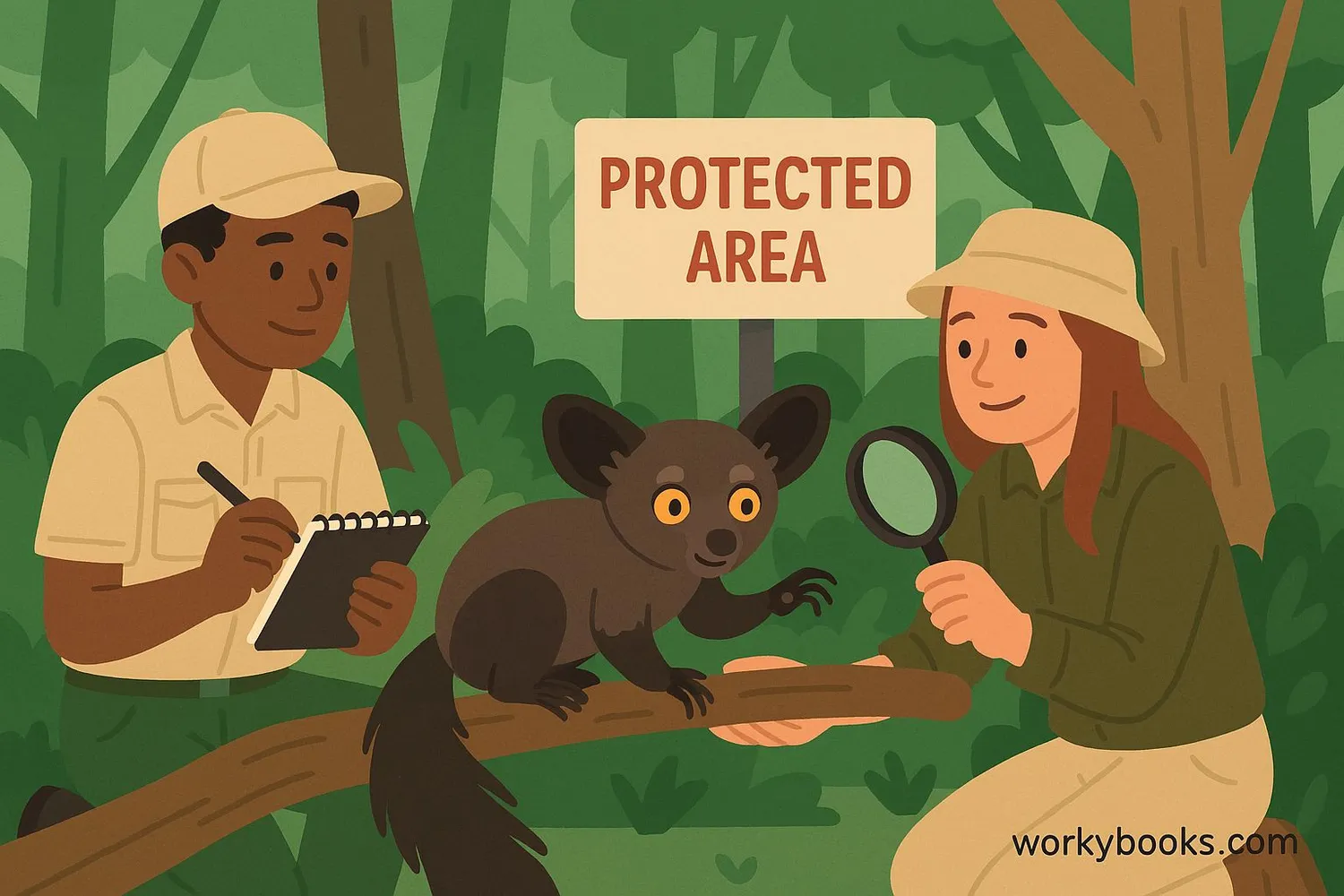The Amazing Aye-Aye - Definition, Examples, Quiz, FAQ, Trivia
Discover Madagascar's most unusual nocturnal primate
What is an Aye-Aye?

The aye-aye is one of the world's most unusual primates! Found only in Madagascar, this nocturnal animal is actually a type of lemur. With its big eyes, bat-like ears, bushy tail, and extra-long middle finger, the aye-aye looks like no other animal on Earth.
Aye-ayes are about the size of a house cat, with dark brown or black fur and a long, bushy tail. Their most distinctive feature is their long, thin middle finger which they use to find food. Despite their somewhat spooky appearance, aye-ayes are gentle creatures that play an important role in their ecosystem.
Did You Know?
The aye-aye is the world's largest nocturnal primate! It uses its special middle finger to tap on trees and find insect larvae hiding inside.
Habitat and Home

Aye-ayes are found only on the island of Madagascar off the coast of Africa. This makes them endemic species, meaning they don't live anywhere else in the world naturally. Within Madagascar, they primarily inhabit the island's eastern rainforests, though they can also be found in dry forests in the northwest.
These nocturnal primates spend their days sleeping in nests made of leaves and branches, usually built high in the trees. At night, they become active, moving through the forest canopy in search of food. Their habitat ranges from coastal forests to mountain regions, as long as there are plenty of trees.
Madagascar Island
Only place in the world where aye-ayes live naturally
Rainforest Homes
Eastern rainforests provide perfect habitat
Nest Builders
Build spherical nests in tree forks
Special Adaptations

Aye-ayes have incredible adaptations that help them survive in their forest environment:
Echolocation Finger
Uses long middle finger to tap on wood and locate insect larvae
Night Vision
Large eyes gather maximum light for night activity
Big Ears
Enormous ears detect insect movements inside wood
Strong Teeth
Rodent-like teeth gnaw through wood to reach insects
The aye-aye's feeding method is called percussive foraging. It taps rapidly on wood with its special middle finger, listening for hollow spaces where insects might be hiding. Once it detects movement, it gnaws a hole in the wood and uses its long finger to extract the insect. This makes the aye-aye the only primate that uses echolocation to find food!
Nature's Tool User
The aye-aye's middle finger is so long and thin that it makes up about one-third of the length of its entire hand!
Conservation

Aye-ayes are classified as endangered species by conservation organizations. Several factors contribute to their declining numbers:
• Habitat loss: Madagascar's forests are being cleared for agriculture and development
• Superstitions: Some local people believe aye-ayes bring bad luck
• Hunting: Occasionally killed when they approach villages
• Climate change: Affecting their forest habitats
Conservation efforts are underway to protect these unique primates:
Protected Areas
Establishing nature reserves in Madagascar
Education
Teaching communities about aye-ayes' importance
Reforestation
Planting trees to restore habitats
Organizations like the Duke Lemur Center in the USA and Madagascar National Parks work to study and protect aye-ayes. Some aye-ayes live in protected areas where scientists can study their behavior and help increase their population.
Aye-Aye Quiz
Test your knowledge about Madagascar's unique nocturnal primate with this quiz!
Frequently Asked Questions
Here are answers to some common questions about aye-ayes:
Fun Aye-Aye Trivia
Discover some amazing facts about these unique primates!
Unique Anatomy
Aye-ayes have continuously growing incisors like rodents, which helps them gnaw through wood to reach insect larvae. This is unusual for primates!
Cultural Significance
The name "aye-aye" comes from the Malagasy expression "heh heh" which means "I don't know." It's said to be what people exclaimed when first seeing this unusual animal!
Scientific History
When scientists first discovered the aye-aye, they thought it was a type of squirrel because of its teeth! It wasn't until later that they realized it was a primate.
Nighttime Lifestyle
Aye-ayes are so well adapted to nighttime activity that they can spend up to 80% of their night foraging for food, traveling several kilometers through the forest canopy.


